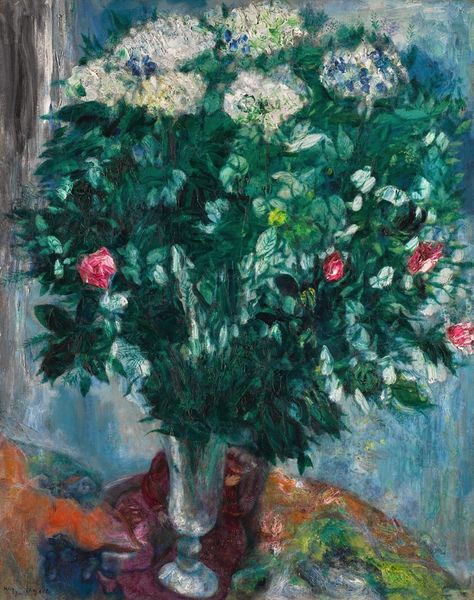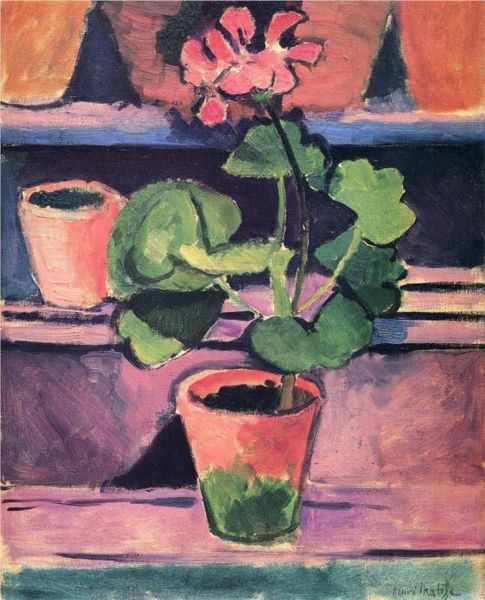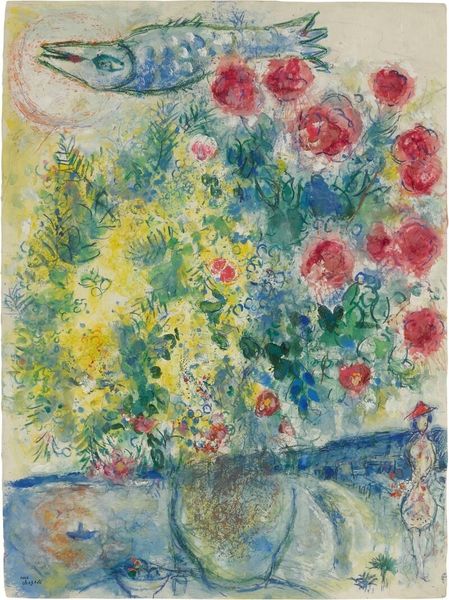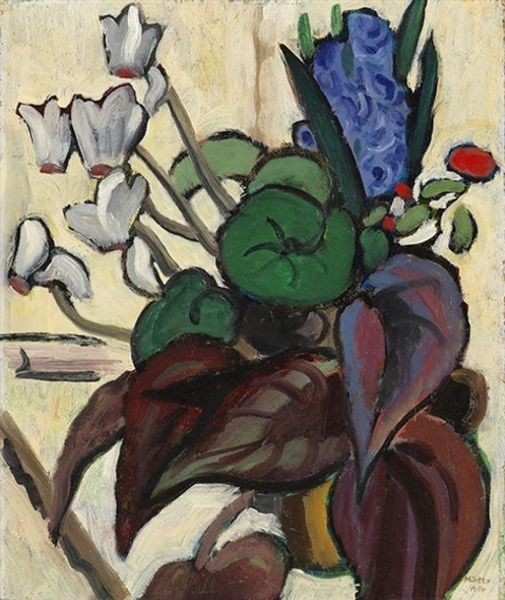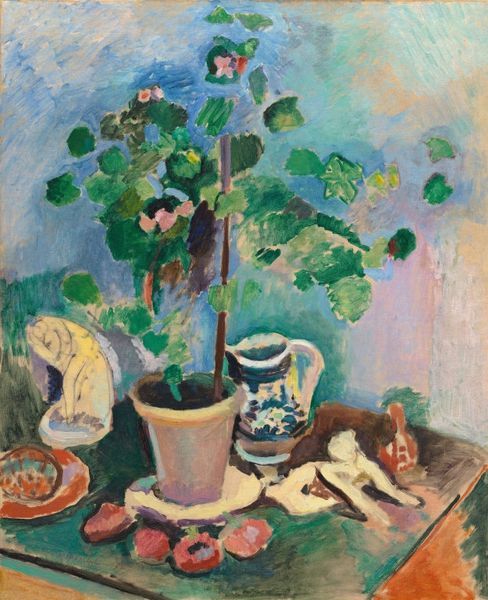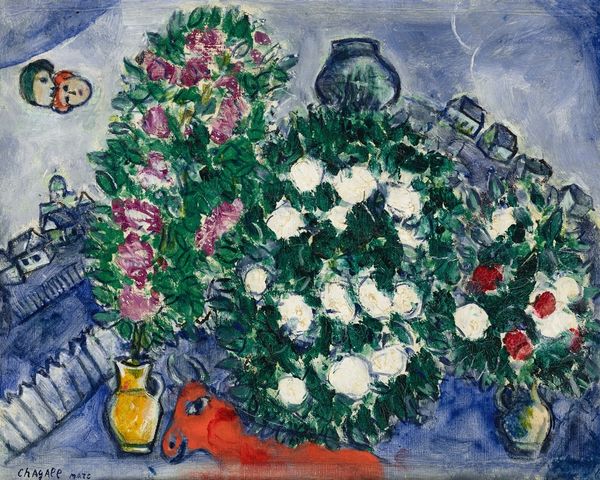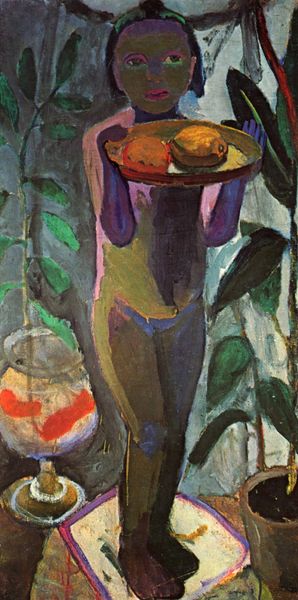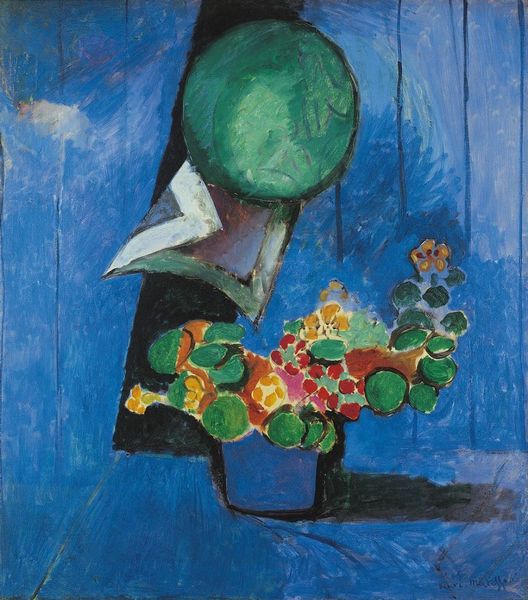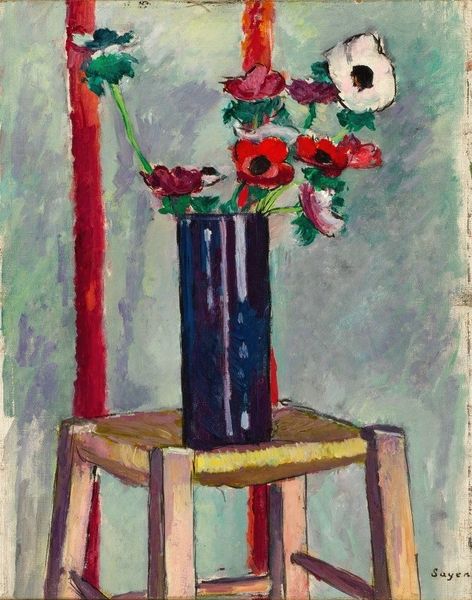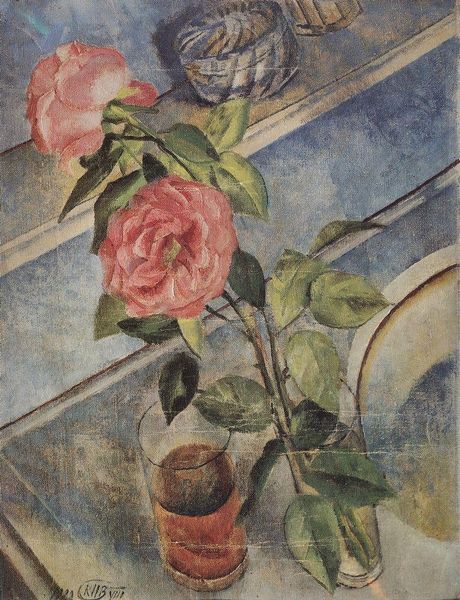
Dimensions: 146 x 97 cm
Copyright: Public domain US
Curator: Branch of Lilacs, painted by Henri Matisse in 1914. There's an almost brutal honesty in its simplicity. It's less a bouquet and more an artifact of daily life. Editor: My first thought: that toothbrush casually leaning against the jar of flowers is oddly comforting! It humanizes the entire composition, taking it out of the realm of the precious. There is a certain vulnerability in display. Curator: Right? It feels so intentionally imperfect. You can see the Fauvist influences, obviously, but there's also a tension there, a stripping back of adornment that anticipates later modernist movements. Editor: Precisely! The objects—flowers, toothbrush, and also the enigmatic figure, are divorced from their conventional, symbolic meanings and relocated within the artist’s interior landscape. It poses all kinds of questions. Like, who gets to produce art? Curator: Questions which I always value! And look at his palette—these muted grays, lavenders. There is some sense of an elegy or grief amidst the gentle buds of new life, of blossoms that promise better things...even if there’s no way of knowing how they will eventually wither. Editor: Agreed. Given the context, painted just before the full onslaught of World War I, that muted palette resonates with the unease of the time. Flowers become more than just still-life décor; here, they’re a meditation on beauty, fleeting existence and survival within violence and sociopolitical conflict. This composition challenges our understanding of both “feminine” themes (floral imagery) and artistic value (or so-called higher-order themes), reminding us that value is context dependent. Curator: And doesn't it all come down to the power of those intimate observations, capturing the melancholy beauty of an ordinary morning? That interplay between art and object transforms how we view both the grand historical stage and what it really means to lead our little lives day after day. Editor: Precisely! In my book, Matisse does the "small" political act of showing us that our worlds contain as much value as historical narratives of conquest and political theater. By reframing this understanding, perhaps our appreciation shifts for where and for whom the canon of aesthetics expands...
Comments
No comments
Be the first to comment and join the conversation on the ultimate creative platform.
